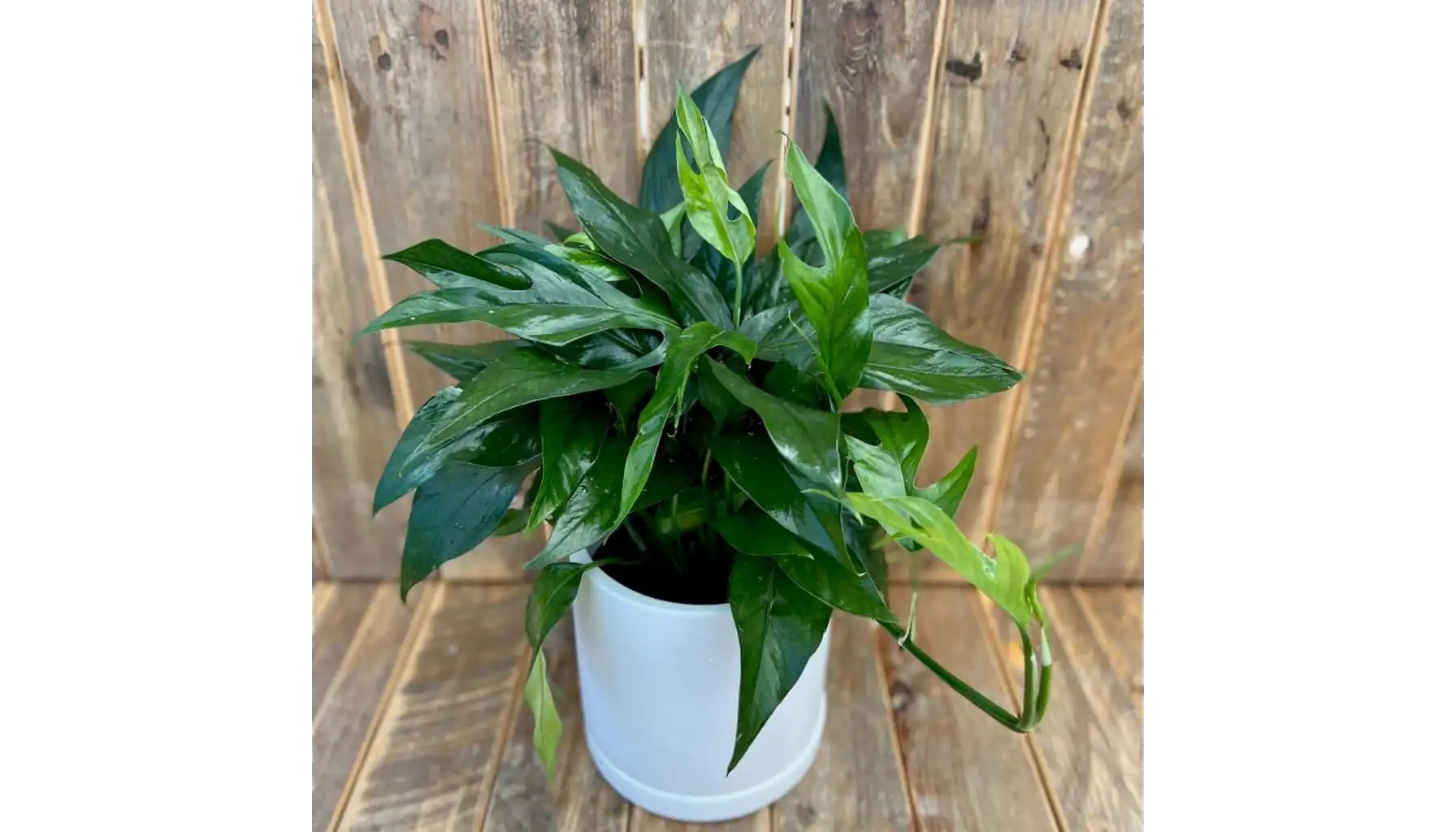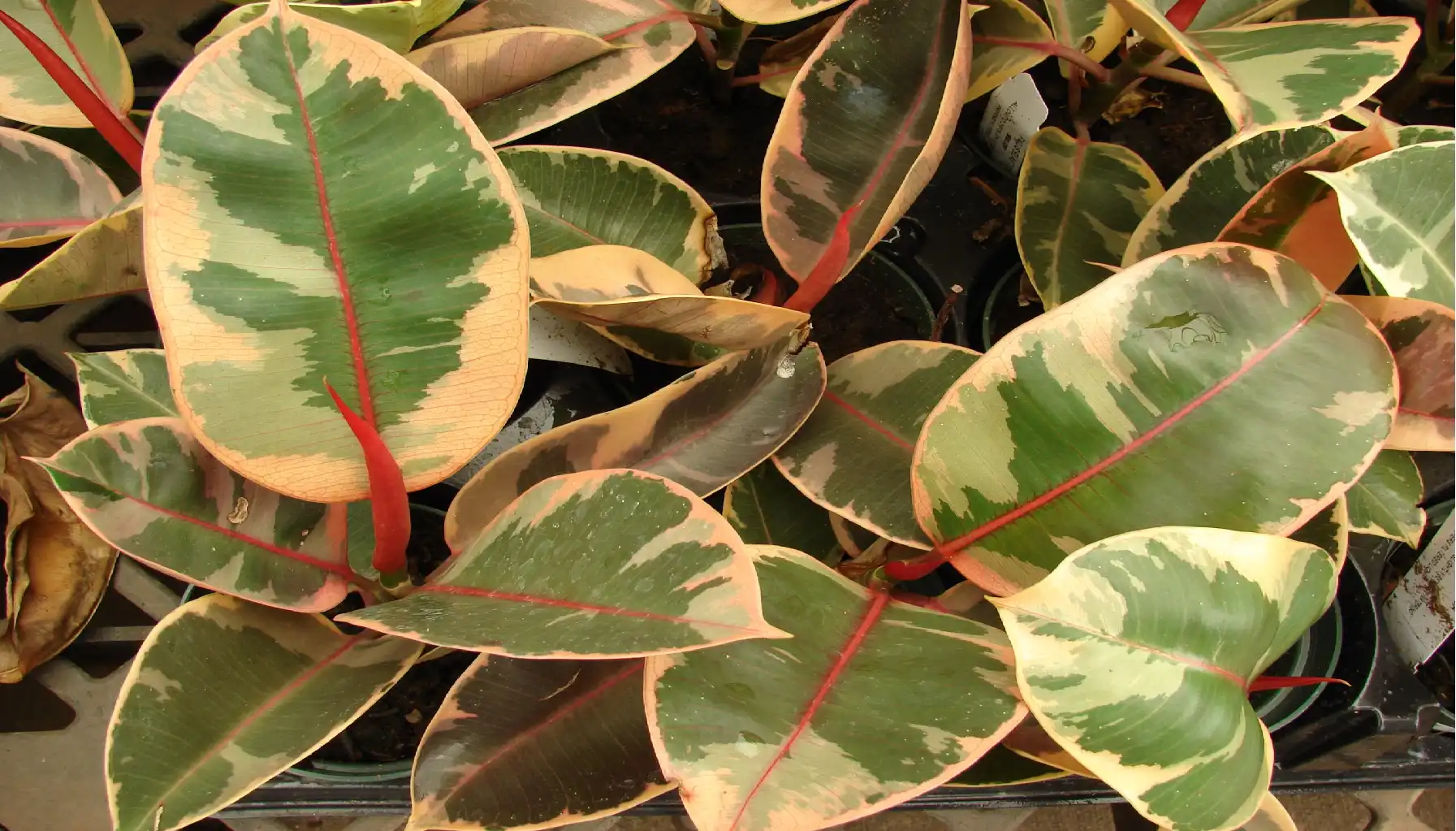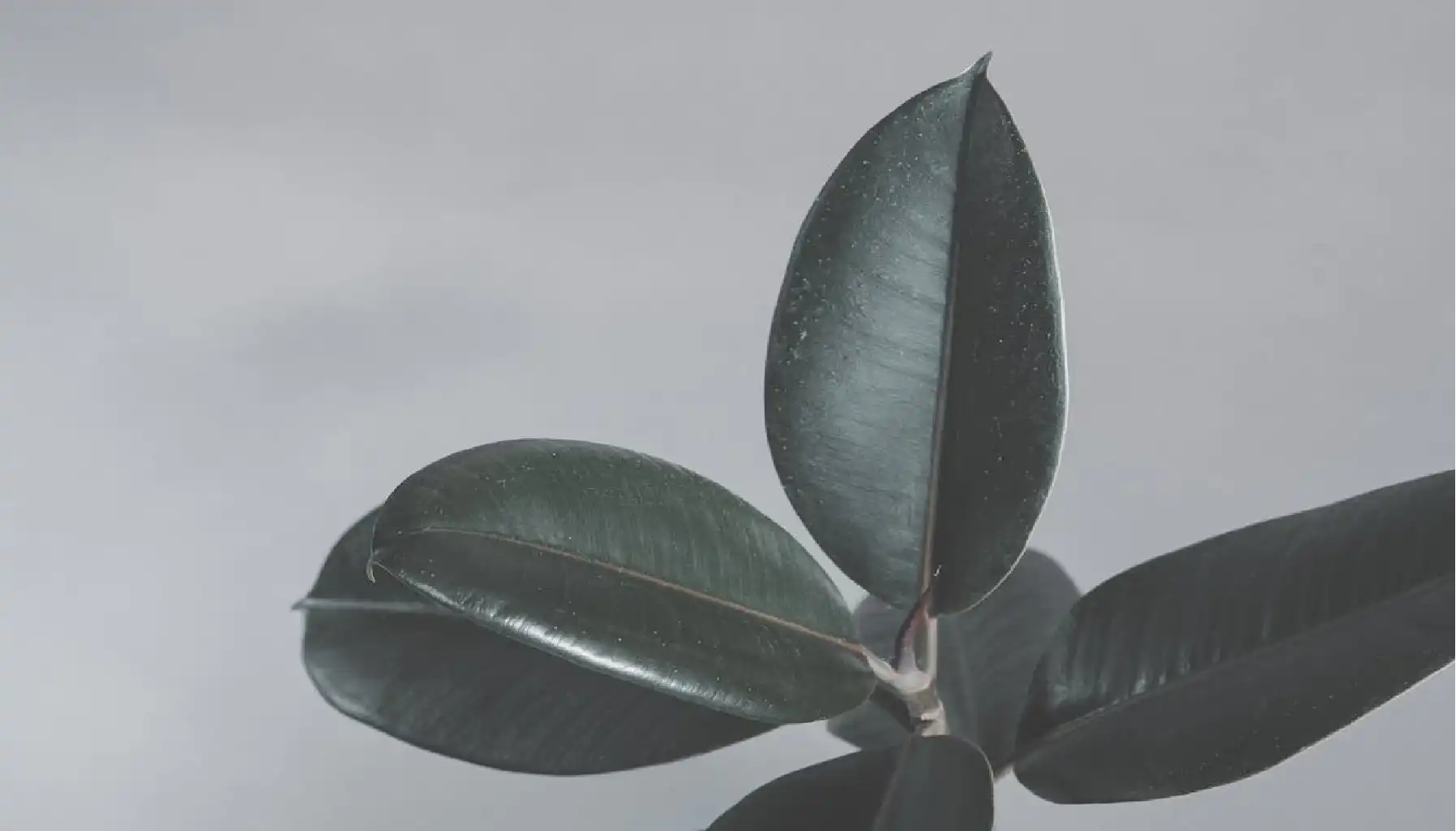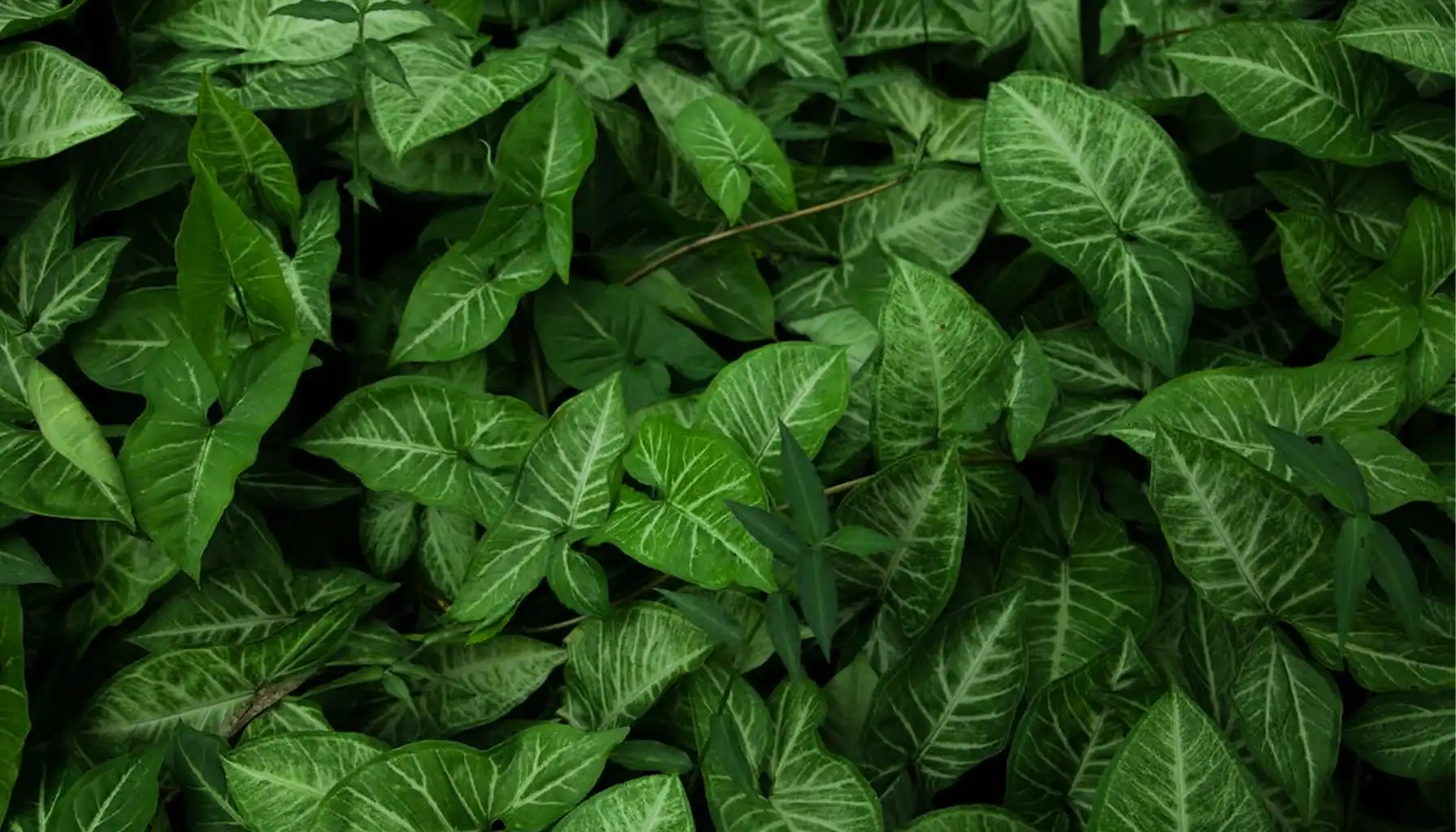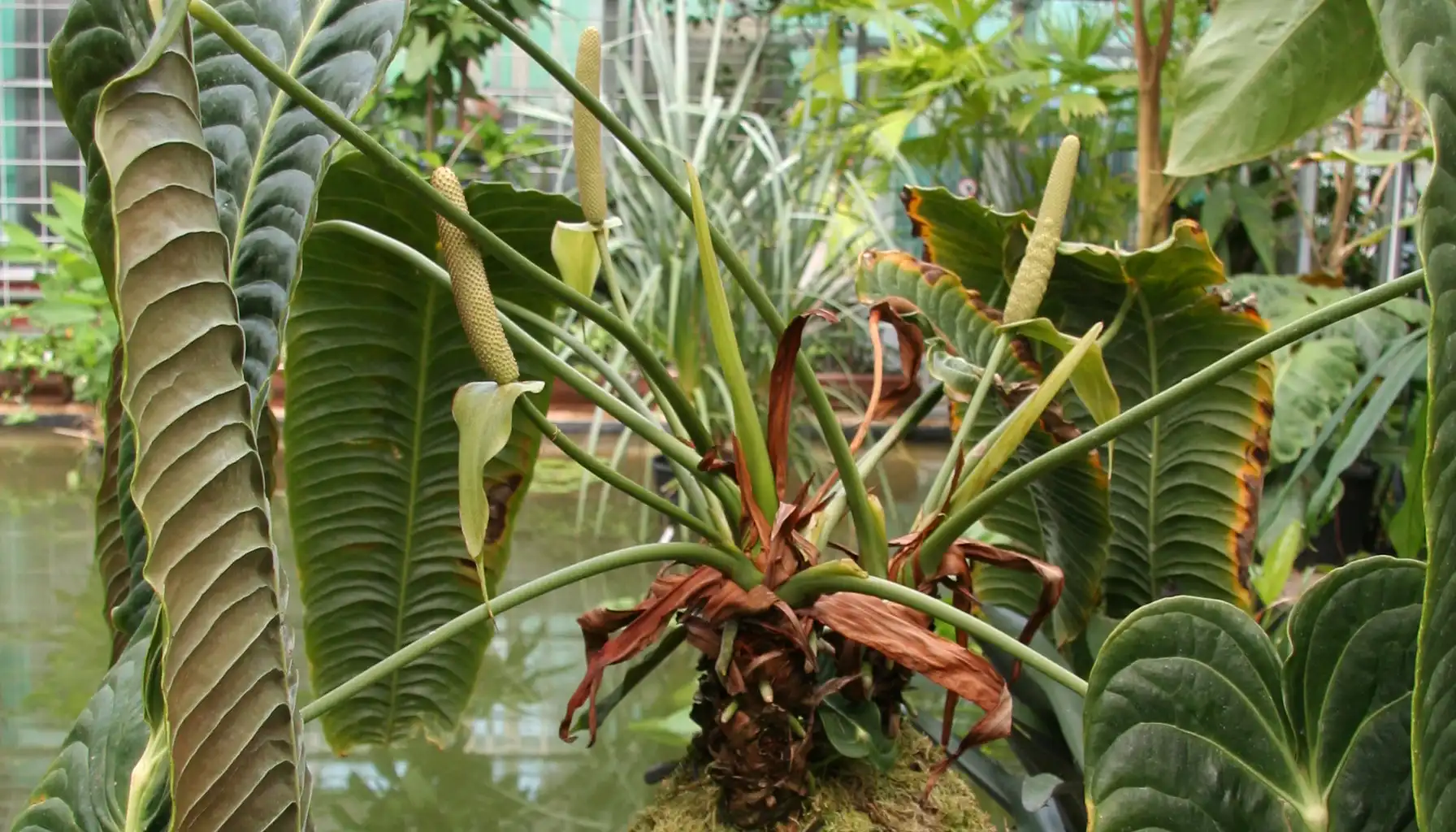Looking for a bold, easy-going houseplant and want it to look lush? The Ficus elastica could be your perfect companion. Its dramatic foliage, sturdy structure, and adaptability make it a staple in stylish homes full of greenery and low-maintenance beginner-level collections alike.
And if you don’t know where to start or how to identify a plant to grow, this guide will explain all the Rubber tree plant care nuances just that easily.
Why Choose a Rubber Leaf Plant?
The American Rubber Plant has more to offer than meets the eye. Let’s break down its appeal:
Feature | Rubber Plant Benefits |
Striking Foliage | Glossy, oval-shaped leaves create a bold, sculptural aesthetic indoors. |
Air Purification | Known to filter airborne toxins and increase humidity in dry rooms. |
Low Maintenance | Tolerates minor neglect and adapts well to indoor conditions. |
Decorative Presence | Adds a statement-making vertical accent to rooms or hallways. |
Pet Caution | Rubber Plant toxic to cats and dogs if ingested; keep out of reach. |
Ficus Rubber Plant Everyday Care
Maintaining baby Rubber Plant care isn’t difficult, but consistency is key. Here’s what you need to know to keep it thriving day-to-day:
Rubber Plant Light Requirements
Ideal Light: Bright, indirect sunlight.
Direct Sunlight: Tolerates some morning rays, but harsh afternoon sun may cause leaf scorch.
Low Light: Can adapt, but growth will slow and leaf color may dull.
Tip: Rotate your Ficus weekly to ensure even growth and prevent leaning.
How Often to Water Rubber Plant
The variegated Rubber Plant prefers soil that’s evenly moist—not soggy. A simple finger test can save your Ficus elastica from both underwatering and rot.
Water When: Top 1–2 inches (2.5–5 cm) of soil are dry to the touch.
Water Less In: Winter months—baby Rubber Plant flower goes semi-dormant.
Avoid: Letting the pot sit in water or overwatering, which invites root rot.
Symptoms Guide:
Condition | Visible Signs |
Overwatering | Yellowing leaves, leaf drop, soggy soil |
Underwatering | Curling leaves, brittle soil, dull appearance |
Temperature & Humidity
The Burgundy Rubber Plant is tropical by origin but surprisingly adaptable to most indoor climates.
Ideal Temperature Range: 18–29°C (65–85°F)
Avoid: Temperatures below 15°C (60°F) and cold drafts.
Humidity: Prefers moderate humidity but copes well with dry indoor air.
Optional Boost: Mist occasionally or place near a pebble tray in dry climates. Check our guide on placing greens in your home to choose the best one.
Soil and Potting Mix
Good drainage is essential. Dense or heavy soil can suffocate the roots and invite disease.
Quick Mix Idea:
Fertilizing Tips
The Rubber Plant tree enjoys a nutritional boost in the growing season, but doesn't need constant feeding.
Feed: Once a month in spring and summer.
Type: Balanced liquid fertilizer (diluted to half strength).
Skip: Feeding in fall and winter when growth naturally slows.
Pruning and Maintenance
With proper Rubber Plant care indoor, Ficus elastica can grow up to around 2m (6 ft).
When to Prune: Early spring or when it outgrows its space.
How to Prune: Use sterilized shears to remove leggy stems or shape the sillhouette.
Caution: The milky sap can irritate skin—wear gloves when pruning.
Bonus: Pruning encourages a bushier, more compact shape.
Pro Tip: Caring for your Rubber Fig Plant becomes even easier with AI Plant Finder. Spot early signs of disease, set up watering reminders and measure light level.
Your care is now grounded in precision and science, not beginner-level guesswork. It’s especially handy for diagnosing leaf issues, checking general conditions, and keeping your whole garden on a healthy schedule.
How to Propagate a Rubber Plant
Once your Ruby Rubber Plant is thriving, new baby Rubber Plant propagation becomes the next exciting step. Now you can gift a baby Ficus elastica to a friend or expand your indoor jungle without extra costs. While propagation isn’t instant, the reward is watching new roots form and flourish under your care.
Pink Rubber Plant can be propagated through water cuttings, soil propagation, and air layering. Each method has its own advantages and timeframes, so let’s see how to propagate Rubber Plant without damaging the main stem.
1. Water Propagation
The most beginner-friendly option—ideal for those who like to see the rooting process unfold.
Steps:
Choose a Healthy Stem: Cut below a node with at least two leaves using sterilized scissors.
Remove Lower Leaves: Leave only the top leaves intact to prevent rotting in water and Rubber Plant leaves curling.
Place in Jar: Use a clear glass jar filled with clean water.
Location: Place in bright, indirect light.
Maintenance: Change water weekly to prevent bacterial buildup.
Wait: Rooting takes several weeks—be patient.
When to Pot: Once roots are at least 2–3 inches long, transplant into soil.
2. Soil Propagation
Great for those who want a more natural rooting transition.
Steps:
Make the Cutting: Same as water propagation.
(Optional) Rooting Hormone: Dip the cut end into rooting powder to speed up the process.
Put in Soil: Use a well-draining potting mix.
Humidity Boost: Cover the pot with a clear plastic bag to create a mini greenhouse.
Mist Occasionally: Prevent the cutting from drying out.
Placement: Bright, indirect light is key.
Note: Don’t tug the cutting to check progress. Gently observe for new growth as a sign of rooting.
3. Air Layering (Advanced but Highly Effective)
A slow method but useful for larger or mature species where you want to propagate without cutting off the top immediately.
Steps:
Find a Mature Stem: Choose one that’s woody and healthy.
Make a Cut: Create a shallow, upward slice about halfway through the stem. Insert a toothpick to keep it open.
Wrap with Moss: Soak sphagnum moss and wrap it around the cut.
Cover: Use plastic wrap to secure the moss, then tape it shut to retain moisture.
Wait: Check every 1–2 weeks. Roots will form after several weeks to a few months.
Cut and Pot: Once roots are visible through the moss, cut below the root ball and pot it.
Reminder: Be patient—Brazilian Rubber Plant is slower to root than other houseplants but well worth the wait, so don’t give up after half of the way.
Troubleshooting Pests & Diseases
With all of the Rubber Plant indoor benefits and its sustainability, the Ficus elastica isn’t immune to issues. Here’s a quick-reference table of the most common threats, how to identify them, and what to do to heal them quickly.
Problem | Symptoms | Causes/Triggers | Remedies |
Mealybugs / Scale / Mites | Sticky leaves, tiny white or brown spots, leaf stippling | Dry air, low humidity | Wipe with alcohol-soaked cloth, use neem oil or insecticidal soap |
Root Rot | Yellowing leaves, mushy roots, foul odor | Overwatering, poor drainage | Remove damaged roots, repot with fresh, well-draining soil |
Leaf Spot (Fungal) | Dark spots with yellow halos | Poor airflow, overhead watering | Prune affected leaves, increase ventilation, use fungicide |
Botrytis Blight | Brown fuzzy patches on leaves and stems | Cold, damp environments | Cut off infected parts, increase warmth and air circulation |
Key Preventative Habits:
Inspect leaves regularly (especially the undersides).
Always sterilize tools before cutting.
Water in the morning to allow foliage to dry out by night.
Keep your Ficus in a well-ventilated area.
Final Tips to Keep Your Rubber Plant Thriving
Before you head off to water, prune, or propagate, save this Ficus elastica care checklist so the most important info stays with you all the way through:
Light: Stick to bright, indirect light—rotate weekly to avoid lopsided growth.
Watering: Let the top 1–2 inches of soil dry before watering. Avoid soggy pots.
Humidity & Temperature: Keep it cozy (18–29°C) and moderately humid. Avoid cold drafts.
Soil & Fertilizer: Use a chunky, well-draining mix and feed monthly in active seasons.
Propagation: Be patient—cuttings can take weeks or months to root. Choose the method that suits your setup.
Pests & Problems: Inspect weekly. Act fast if you notice sticky residue, yellow leaves, or spots.
Support Tools: Use AI Plant Finder to troubleshoot, log progress, and fine-tune care routines.
These care routines are quite easy for such a lush and thriving plant like this one. Set your reminders at AI Plant Finder not to forget about watering and keep all the basic info right in your pocket. Even if you are at the very beginning of your home garden path, such a plant choice will give you a great, stable start.
Related AI Plant Finder Posts
